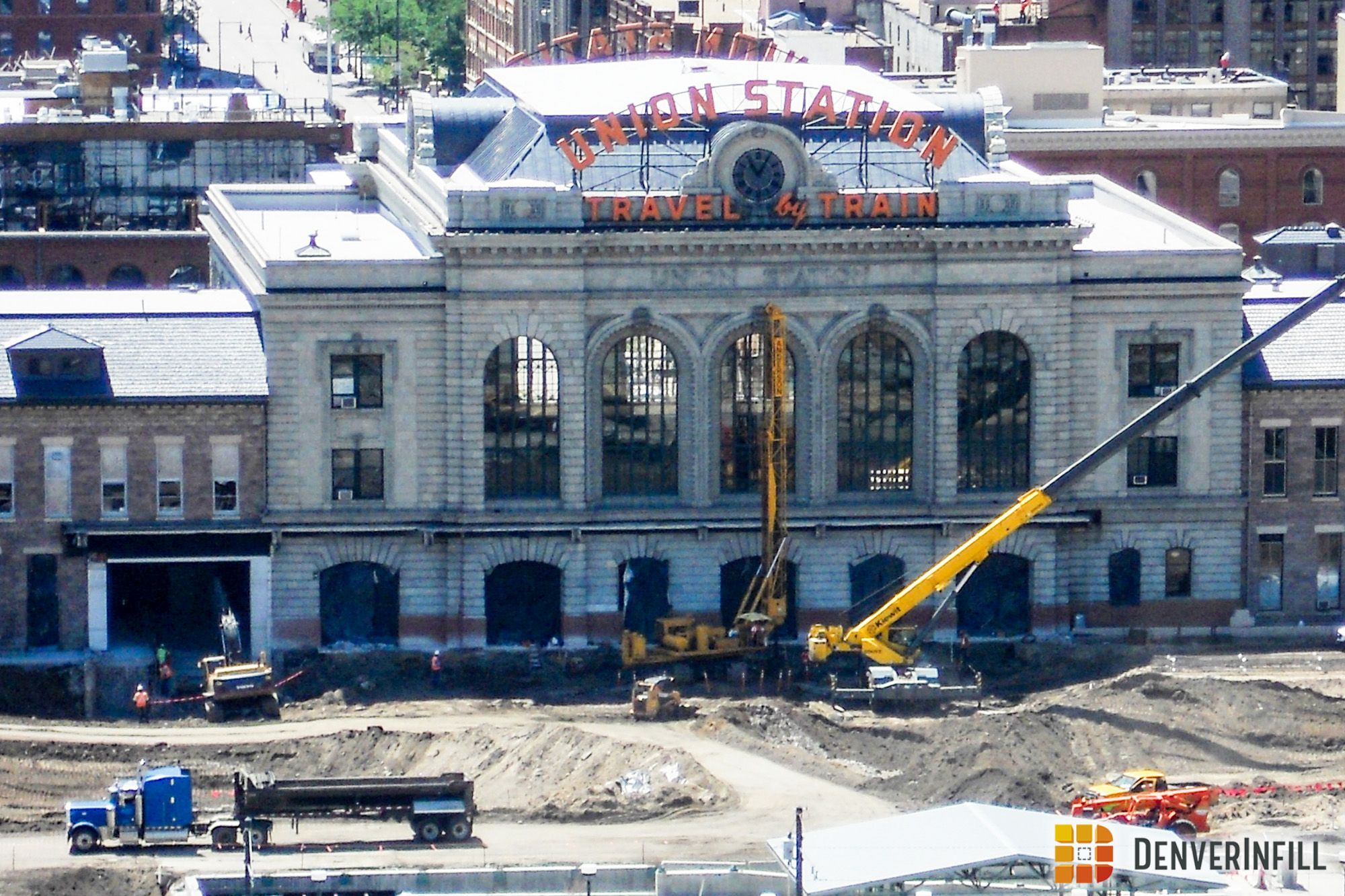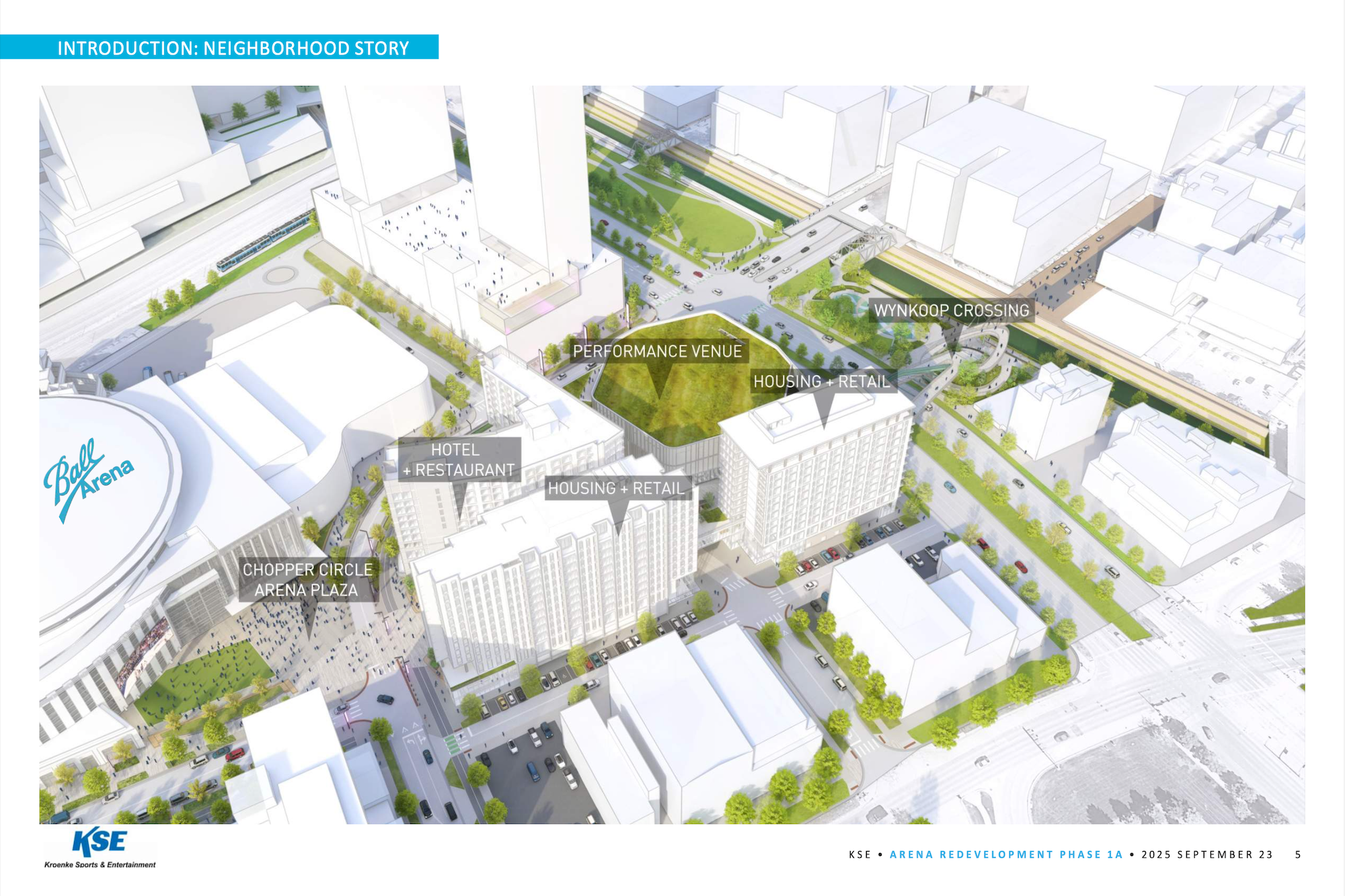The two teams competing for the right to redevelop Denver’s historic Union Station (as part of the larger Union Station Transit District project) will be making their presentations to the public this Thursday, November 3, 2011, at the Colorado Convention Center starting at 6:00 PM.
The two teams’ general reuse concepts were revealed this spring, and we covered them over at DenverUrbanism. First, here’s an introduction post on the process RTD created for selecting the winning development team. Then, here are two posts about the concepts themselves: this one about the Union Station Neighborhood Company’s proposal and this one about the Union Station Alliance’s proposal.
Since then, both teams have fully refined their reuse concepts, submitted formal proposals to RTD, and have been interviewed by RTD’s selection committee. Before RTD makes their final selection later in November, the public is being given the chance to hear presentations from both teams on their formal proposals and provide feedback to RTD on what you like or don’t like about both.
Here’s a blurb on the event from RTD’s press release:
The two and a half-hour event will be held in the Colorado Convention Center, Rooms 201 and 203, 700 14th Street (at California) in downtown Denver and begin at 6 p.m. Each team will have 30 minutes to present the details of its proposal with a 30-minute question/answer session with the public following each presentation. The first presentation by Union Station Neighborhood Company starts at 6:15 p.m., and the second presentation by Union Station Alliance will begin at 7:25 p.m.
For the full press release, please click here.
This is an exciting moment in the larger Union Station project. The rehabilitation of the historic structure and the various activities that will be taking place within it will contribute significantly to the overall success of the project and, in particular, the activation of Wynkoop Plaza along the Downtown side of the station. This is a major public presentation on Downtown’s biggest civic project—I hope you’ll be there!











The Potential for Greatness
Like the sun that continually shines here, Denver has always been a bright spot when it comes to engaging the community in the design process of its public buildings and spaces. The library, civic center park and even the convention center and adjacent hotel were all interesting studies in a participatory approach to planning and design. The Union Station Re Use Project extends on this lineage and is an example of how a transparent process can give each of us an opportunity to not only study the intricacies and intent of a proposers solution, but also the freedom to question and criticize as well. This is the foundation for this critique.
Last week the 2 development teams, Union Station Neighborhood Company( USNC) and the Union Station Alliance team(USA), presented their designs for the Union Station Re- Use project. By now most of us are aware of the scale and physical impact of the Union Station Transit District’s Multimodal Transportation Hub development, yet the details of the adaptive re use, restoration and renovation of Union station were left somewhat vague until now. Finally, we get to see the wonderful potential of the proposed community green that will stretch across the front
of the train station, creating a welcoming and functional park that will connect the proposed restaurant and retail uses. The vitality and critical importance of this linear urban park is evident when you see the video offered by the USNC team ( http://www.unionstationdenver.com/ ). It
suggests a communal space that is activated by people , water, trees , and hard scape with the thoughtful integration of seating and respite zones. Surrounded by a food market and compatible restaurant and retail uses the proposed street level plan of the enclosed spaces and use potential is actually quite similar in both development teams proposals. Yet there is one major difference in the schemes that will have a tremendous impact on their communal and participatory
success . And this difference is the fatal flaw in the Union Station Alliance Teams
scheme.
The Union Station Alliance team proposes that Union station be converted into a hotel
with a large automotive and taxi drop off, and valet parking zone placed
immediately in front of the historic train station. Bisecting the intended
linear park in front of the station this drop off zone will completely destroy
the integrity of the community green that will connect the restaurant and
retail spaces that are proposed to flank both sides of the station. Split in
half by a busy automotive circulation zone, the historic public front door of
Union Station will now become a formal hotel entry, communicating an intentional
privacy that completely disrespects the precedent of public use of this
historic treasure. The hotel lobby, hiding behind the development teams title
of ‘ public living room’ is actually a private space for its hotel guests yet
it’s also supposed to be the public waiting area for the trains and buses. The
juxtaposition of these incompatible uses and the thought that each day
thousands of people will need to traverse a busy and dangerous hotel drop off
to enter the train station is , quite frankly, incomprehensible. If this is
the best solution the development team can come up with, they
need to go back to the drawing board and re evaluate the vision that made this
historic station a public entity that connected versus segregated the public.
Sit back for a moment and think about the number of times you have walked
around a city and decided that you wanted to go relax in a hotel lobby. If
you’re not a guest of the hotel my guess is that this happens very rarely for
most, and not at all for many. Yet there are a few examples of hotel lobbies
that do try to seamlessly layer their public and private use potential. These spaces are typically edged , or even embedded in retail , restaurant or bar uses. An example would be the
Delano Hotel in Miami, Florida’s South Beach district. It’s a wonderful linear space that
thoughtfully weaves you into a cool white tapestry of respite and entertainment vignettes that obfuscate the traditional perception of hotel lobby. Yet even in its fluidity and creative spatial layering this multi use lobby still has a forbidden sense of privacy, supplemented by the inevitable that you have entered a private hotel. ‘You can eat and drink here , but don’t
stick around after’ is the ultimate message if you’re not a hotel guest. It is this message that will dominate the so called ‘ living room’ of the Union Station Alliance team’s
scheme and eventual lead to its demise if it is selected for further development.
It’s true that the developers schemes are in their infancy, yet their differences are apparent in their attitude about public and private space. Should the Union Station great Train Hall be dominated by a hotel check in point and bar or should it be maintained as a public space that is open to all? Should we disrupt the public green with a taxi drop off and private hotel entry way? And what about the intensity of remodel and development required to change the upper floors of Union Station from simple office space to hotel rooms? These are the questions we should be asking ourselves when evaluating the proposals. Design details relative to materials,lighting, handicap accessibility, sustainability, etc, will be worked out later and should not factor in at
this point. In fact , im hopeful that both teams continue to innovatively integrate the
retail and restaurant activities into the great Train Hall of the station and consider creative ‘outside the box’ ideas like utilizing roof tops for green houses that will supplement the food market with winter grown vegetables, creating opportunities for a year round versus seasonally dependent environment.
At this juncture I must confess that I have a personal and professional
interest in the outcome of this selection process. My office is just a few
blocks away from the station and I have a studio full of designers that are
eager to try out new restaurant and retail spaces as they make they way back
and forth between the office and communal modes of transit. In the Union Station Neighborhood Company scheme one can see the passion, the joy and collaborative intent that is infused
within the idea of a food market and linear green connective tissue that will link all the public spaces. After viewing these 2 proposals it is immediately apparent to me that there is potential for greatness in the USNC scheme thus im hopeful everyone who is interested in the future of downtown will take a few minutes to view these proposals for themselves and offer their opinions. It is rare that a city upholds its goal of transparency in the public realm, thus we should savor this opportunity to influence the outcome of this significant project.
Our plans for the adaptive reuse of Denver”s historic Union Station have drawn several criticisms which are entirely untrue.
1. There are no plans and have never been part of the vision to provide a large automotive and taxi dropoff midway into the Wynkoop Plaza’s main entrance to the transit facility. unfortunately, the drawing included is not correct…….Our mistake, created by a talented jr. architect.
2. the “city’s living room” is a moniker I coined which has been used by both teams. The phrase should be filed away as it has been interpreted as a “private” place which is not the reality. The great hall or train room will be one of the most public spaces in the front range used hopefully by thousands of local travelers and international tourists each day and night who will experience a memorable Western welcome upon entering the landmark space.
3.The comments regarding segregation are not applicable to the Union Station Alliance’s carefully designed space planning which meets the public’s need at the same time it provides financial stability and activity 24/7’365.
4.Valet service to parking spaces to be provided by Oxford Hotel’s reserve spaces at 17th and Wazee will be available at curbside, not as suggested in our drawing which is incorrect. Thank you for pointing this out as we have always believed the plaza should be a stunning public space available for all sorts of human activity and not in any way geared to the automobile.